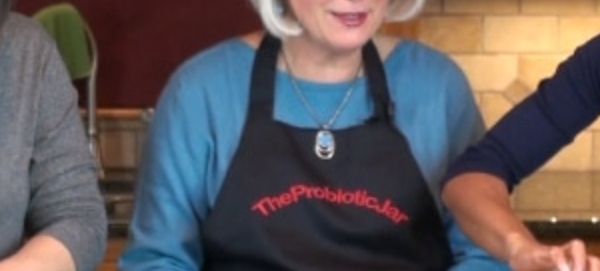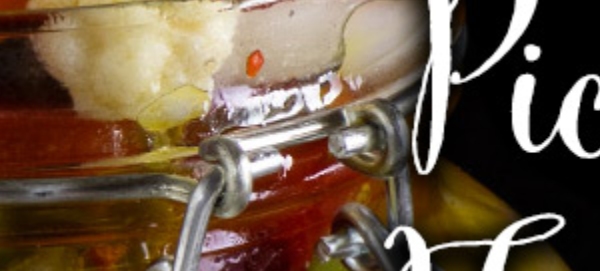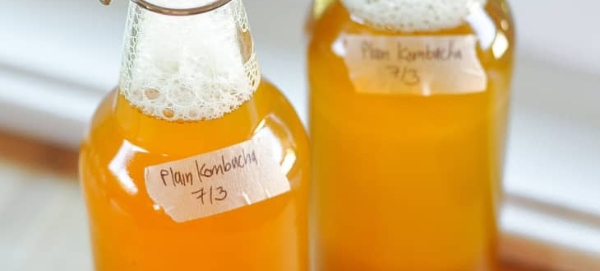A 3D ceramic fermentation vessel building project.
{Art, Home economics, Science}

Image source sauerkrautpots.com
Crocks are Vessels, or container, used to preserve vegetables and fruits in and they have been made by humans for thousands of years. But lets back up a bit and talk about what is fermentation.
Do you know any foods that have been Fermented? Sure you do- Yogurt, Kimchi, sauerkraut, beer and wine to name a few. Some of you might even know of Kefir and Kombucha and Crème fresh.
In the culinary sense, fermentation is the transformation and preservation of food by bacteria. While the process of fermentation as a culinary practice dates back to early human civilization, it took a very long time before the scientific principles were understood (1). However, archaeological studies have shown that fermentation technologies were well-established components of ancient civilizations, and there is even evidence that the concept of “starter” cultures were widely appreciated and maintained (2-5). The table below highlights a few fermentation milestones in the context of culinary anthropology: (Text source https://rockedu.rockefeller.edu/component/biochemistry-fermented-foods/)
If you are interested in the science behind Fermentation please see this wonderful article:
The Science of Lactic Acid Fermentation: Pickles, Kraut, Kimchi, and More
A bit of world His&Hers&Theirstory on the topic:
Human beings are known to have made fermented foods since Neolithic times. The earliest types were beer, wine, and leavened bread (made primarily by yeasts) and cheeses (made by bacteria and molds). These were soon followed by East Asian fermented foods, yogurt and other fermented milk products, pickles, sauerkraut, vinegar (soured wine), butter, and a host of traditional alcoholic beverages. More recently molds have been used in industrial fermentation to make vitamins B-2 (riboflavin) and B-12, textured protein products (from Fusarium and Rhizopus in Europe) antibiotics (such as penicillin), citric acid, and gluconic acid. Bacteria are now used to make the amino acids lysine and glutamic acid. Single-celled protein foods such as nutritional yeast and microalgae (spirulina, chlorella) are also made in modern industrial fermentations.
For early societies, the transformation of basic food materials into fermented foods was a mystery and a miracle, for they had no idea what caused the usually sudden, dramatic, and welcomed transformation. Some societies attributed this to divine intervention; the Egyptians praised Osiris for the brewing of beer and the Greeks established Bacchus as the god of wine. Likewise, at many early Japanese miso and shoyu breweries, a small shrine occupied a central place and was bowed to daily. In ancient times fermentation joined smoking, drying, and freezing as basic and widely practiced food preservation techniques. Wang and Hesseltine (1979) note that “Probably the first fermentation were discovered accidentally when salt was incorporated with the food material, and the salt selected certain harmless microorganisms that fermented the product to give a nutritious and acceptable food.” The process was taken a step further by the early Chinese who first inoculated with the basic foods with molds, which created enzymes; in salt-fermented soyfoods such as miso, soy sauce, soy nuggets, and fermented tofu, (Text source https://www.soyinfocenter.com/HSS/fermentation.php)
Timeline
 (Image source https://rockedu.rockefeller.edu/component/biochemistry-fermented-foods/)
(Image source https://rockedu.rockefeller.edu/component/biochemistry-fermented-foods/)
There are different ways to construct fermentation tanks; the one I want to concentrate on is the Water seal method.

Image source https://www.meatsandsausages.com/fermenting-pickling/sauerkraut/fermenting-clay-crocks
As the vegetables inside the container ferment the bacteria off-gasses. The build up of gas needs to be relived… Hold your laughter… People who use jars with lids simply open the lids and ‘Burrrp’ the jars. Yes, Burp is a fermenting term…Yes, it will be on the vocab test…. In the water seal jars, the gasses escape through the water its-self. The water also serves another purpose, that of acting as a barrier to keep things from crawling inside the jars, and dying… Although, it would just be added protein if they did 🙂
Images of Crocks from around the world from various eras:

Image source www.carousell.sg

Image source picclick.co.uk

Image source rachelslivingfood.co.za

Image source www.oscarjuicers.co.za

Image source www.oscarjuicers.co.za

Image source www.oscarjuicers.co.za
Construction methods:
Seeing as we just got a HUGE slab roller and the fact that we don’t use the electric wheels, I’m thinking we will be hand building these jars. I want you to go online and talk a look at all the different types of fermenting jars there are out there- so many designs! Get an idea of what you like and then start sketching. Please also think about how much experience you have had with clay and what you think you ca actually build in the time provided!
steps:
-
- Online image search
- 15 Thumbnail sketches
- 3- 3×5″ Drafts
- 1- 5×8″ Good copy colour drawing.
- 1- 8×11.5 Blueprint of all the parts (yes, all the pieces should be in size relation to each other)
- Through your blueprint that I want to be able to understand HOW you will construct your Jar.
- Once the blueprint has been approved by my ME, start building!
- Yes, I will be giving a Demo on the safe use of the Slab Roller.
- Yes, we will discuss the pros/cons of different building styles.
- I will also show you different ways to make Weights as well.
- Please know that we will be using only food-safe grade materials in this project.
Other fermentation ware from millenniums gone bye:

‘World’s oldest wine’ found in 8,000-year-old jars in Georgia Image source BBC.com

From Israel Image source haarets.co

Image source brunkauctions.com Chinese Sake jar

Earthenware fermentation vessel found in a Celtic grave near the northern Bavarian village of Kasendorf, nearn Kulmbach, in 1934. That crock dates from at least 800 B.C.
www.homebrewtalk.com

Traditional Korean fermentation pots from various regions.
Image source www.dramasrok.com
-
This item is a webpageDrag this item to reorder your resources
-
This item is a webpageDrag this item to reorder your resources
-
This item is a webpageDrag this item to reorder your resources
-
This item is a webpageDrag this item to reorder your resources
-
This item is a webpageDrag this item to reorder your resources
-
This item is a webpageDrag this item to reorder your resources
-
This item is a webpageDrag this item to reorder your resources
-
This item is a webpageDrag this item to reorder your resources
-
This item is a webpageDrag this item to reorder your resources
-
This item is a webpageDrag this item to reorder your resources
-
This item is a webpageDrag this item to reorder your resources
-
This item is a webpageDrag this item to reorder your resources
-
This item is a webpageDrag this item to reorder your resources
-
This item is a webpageDrag this item to reorder your resources
-
This item is a webpageDrag this item to reorder your resources
-
This item is a webpageDrag this item to reorder your resources
-
This item is a webpageDrag this item to reorder your resources
-
This item is a webpageDrag this item to reorder your resources
-
This item is a webpageDrag this item to reorder your resources
-
This item is a webpageDrag this item to reorder your resources
-
This item is a webpageDrag this item to reorder your resources
-
This item is a webpageDrag this item to reorder your resources
-
This item is a webpageDrag this item to reorder your resources
-
This item is a webpageDrag this item to reorder your resources
-
This item is a webpageDrag this item to reorder your resources
-
This item is a webpageDrag this item to reorder your resources
-
This item is a webpageDrag this item to reorder your resources
-
This item is a webpageDrag this item to reorder your resources
-
This item is a webpageDrag this item to reorder your resources
-
This item is a webpageDrag this item to reorder your resources







